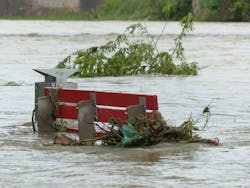NASA Study Tracks Post-Harvey Storm Water With GPS
A new study by researchers from the National Aeronautics and Space Administration (NASA) used Global Position System (GPS) to track the path of storm water following Hurricane Harvey. The study, published in the journal Science Advances, determined how long storm water stayed on land following the storm and where it dissipated to using GPS.
The researchers used GPS satellites to measure changes in the Earth’s surface elevation with accuracy within millimeters. The team combined daily elevation measurements from approximately 220 stations from western Texas to Louisiana to track the changes in storm water following the hurricane.
“When you sit on a mattress, your weight depresses its surface,” said Lead Author Chris Milliner. “Earth’s crust is also elastic and behaves in a similar way under the weight of water.”
Overall, the researchers found that in the first eight days following Harvey’s landfall, 30% of storm water was captured or stored on land, mostly in standing water. Approximately 60% drained into the ocean and the remaining 10% was lost due to evapotranspiration. Additionally, the 30% of water captured on land dissipated over a period of five weeks through evapotranspiration, runoff or groundwater replenishment, as reported by Phys.org.
Moving forward, the study will inform water and flood managers on how storm water tends to behave or flow after a major storm event. The data can help flood experts prepare for future extreme rain events.


